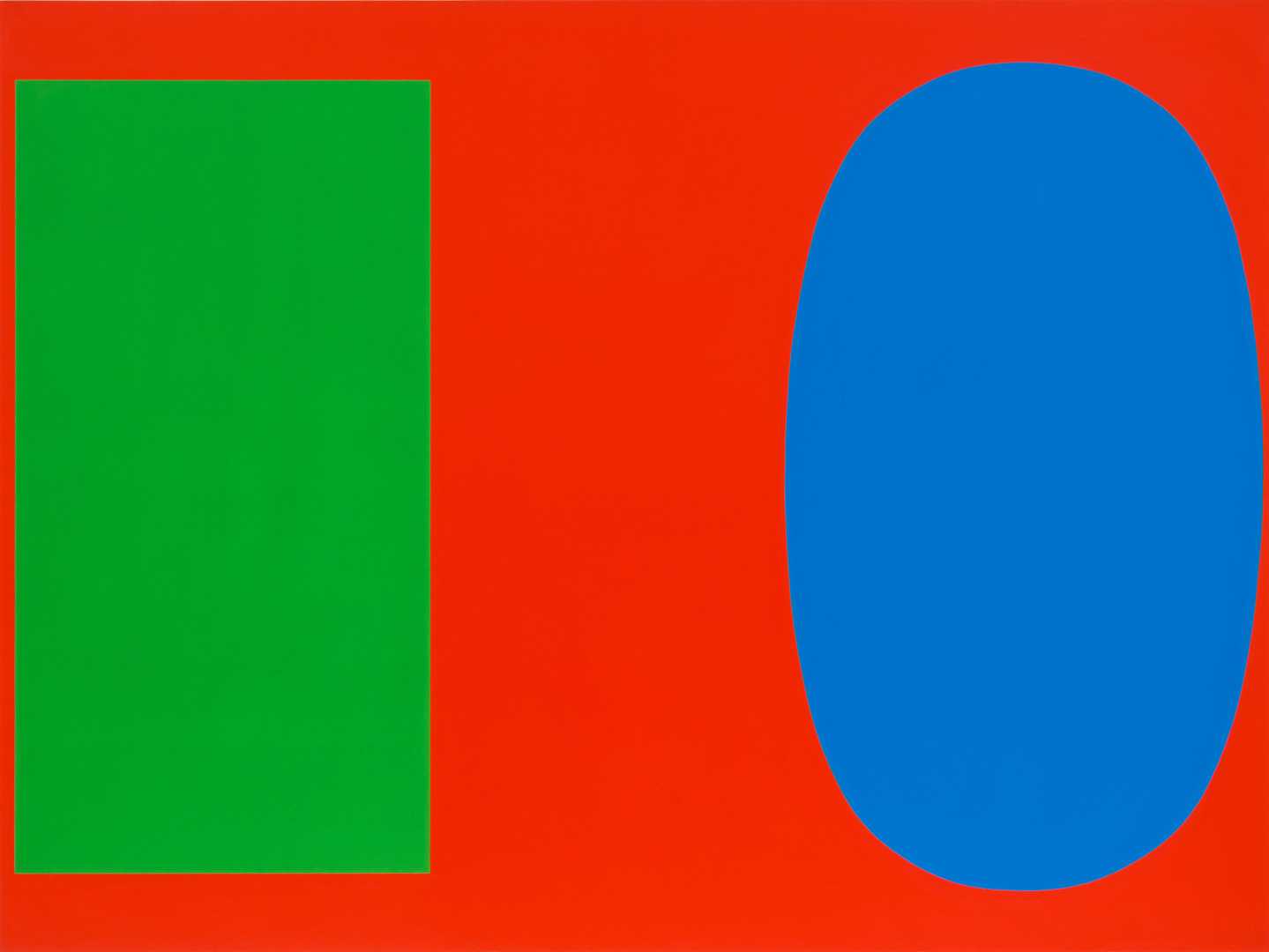
Green Blue Red
Throughout the late 1950s and early 60s, Ellsworth Kelly worked with shapes and solid colors deployed flatly across single canvases. Finding inspiration in both nature and art, he was drawn to the oddity of forms and the various conditions that create visual interest in unlikely ways. In this spirit, Green Blue Red abstains from the balance and harmony of traditional painting and reflects an impulse to build a surface of visual tension out of the contrasts of color and shape and the containment of an edge. Kelly’s works of this period depict the jarring difference between colors and the unusual placement of shapes, energizing the visual experience and creating a disorienting optical effect. The green rectangle and blue oval are vibrant and foreign against the red background. Kelly does not construct balance or resolve; he creates compositions that are alive in their idiosyncrasies.
When Ellsworth Kelly arrived in New York in 1954 after six years of working in Europe, he found an environment of artists receptive to his particular approach to abstraction. Moving into the now famous Coenties Slip complex in Lower Manhattan, Kelly encountered the art and fellowship of Agnes Martin, Jack Youngerman, James Rosenquist, and Robert Indiana. Initially Kelly’s approach and work were radically different from the abstract art being practiced in the city. Instead of abstracting from a figure or an image, Kelly was more interested in the experience of abstractions found in everyday life and nature. Abstraction was less something to be achieved than re-created.
As many critics have observed, Kelly’s work can be viewed in terms of what it is not. Unlike the painting of the abstraction expressionist and color field artists at the time, Kelly had no desire to make works involving expression, conceptual organization, depiction, or narrative. He was willing to drop traditional painting’s insistence on the square or rectangular frame to pursue departures of vision and experience. For this reason, Kelly is seen as a forerunner to artists such as Dan Flavin or Richard Serra, who focus on the experiential act of viewing art rather than the transmission of conceptual information.
An exceptional example of Kelly’s method is Green Angle, 1970. Only the second single-panel work completed by Kelly, Green Angle is radically simple in format. Though the integrity of the single panel is retained, the stretching and breaking of the traditional canvas rectangle calls for a different orientation between the viewer and the artwork. Instead of seeking narrative or harmony of composition in a self-contained image, the viewers find themselves immersed in a green field, which visually acts as a figure on the ground of the gallery wall. The architecture of the gallery is brought into play, and the real space that the viewers inhabit becomes the full experiential zone of the painting based on perception and instinct.